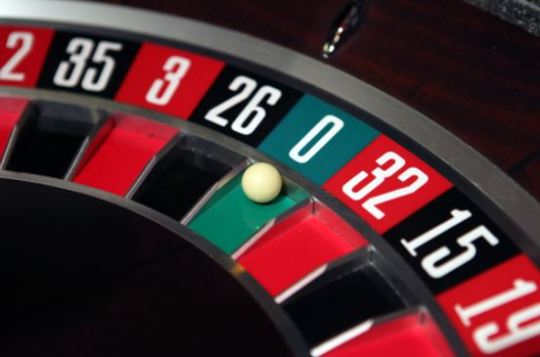#RandomNumberGenerator
Explore tagged Tumblr posts
Text
Know about Random Number Generator
In today's era, technology has advanced so much that whenever a human has any problem; they search online and find the tool for themselves. Some tools are paid for, and you must take a subscription, but some tools in those tools can be used without any subscription as well, which makes the work easy and hassle-free for you. Whether it is scientific work related to statistics or making an unbiased decision, using online random tools becomes necessary for maintaining impartiality. Sometimes, a person needs to pick a random number so that they don't get their result and get a random and correct answer. For which a random number generator can be used.

Why use a random number generator?
Fairness result: When a random number is picked based on personal thinking, then your friend or whoever is with you understands partiality in it and understands that it is for your benefit, so to avoid this type of problem, using a random generator tool becomes the best option for all those people so that by picking random number through the tool, fairness result comes out and you remain safe.
Statistics: In sampling bias or simulation, we need to pick random numbers to select data so that a random result is obtained.
For entertainment purposes: Random number pickers can be used for board games, lottery, or any other games where random numbers need to be chosen.
For everyday activities: We do a lot of activities in our day, whether it is playing in a group, choosing what to eat, what clothes to wear, where to go or when to go, for all this you can make your decision easy by picking any random number. Here
0 notes
Text
🔢 New Tool: Random Number Generator!
Need a random number? Our Random Number Generator makes it quick and easy! Perfect for picking winners, generating codes, or just having some fun. Try it out!
https://seotools.report/tools/number-generator
0 notes
Text
Spooky Action at a Distance: Quantum Entanglement Explained
NIST Discovers “Spooky Action,” Unlocking True Randomness for Quantum Leap Trust.
NIST researchers discovered “spooky action at a distance,” which concerned Albert Einstein. This finding solved a long-standing quantum physics problem and created CURBy, the Colorado University Randomness Beacon, a pioneering service that provides publicly available, verifiable, and actually unexpected random numbers.
Spooky distant action
Quantum entanglement was called “spooky action at a distance” by Einstein. Entanglement is the bizarre idea that two physically independent particles may have inherently connected properties before being measured. Einstein questioned this theory, and scientists hadn't been able to prove it almost completely until lately.
The NIST team performed rigorous Bell tests, named for Irish physicist John Bell. Bell’s 1964 hypothesis states that “local, pre-existing (i.e., realistic) conditions” can only explain a portion of measurement correlations. Any correlations beyond these limits would require quantum entanglement or faster-than-light transmission, which experts believe is impossible.
NIST scientist Krister Shalm stressed the significance of their findings: “The experiment is incompatible with local reality, or hidden local action, but you can’t establish quantum mechanics. The results match quantum theory' predictions of entangled particles' strange behaviour. He added, “If God does play dice with the universe, then you can turn that into the best random number generator that the universe allows”.
Two detectors in separate rooms of a huge Boulder laboratory building received identical pairs of photons from the NIST team. The detectors were 184m apart. Produce entangled photon pairs with highly coupled polarisations and prescribed orientations. As photons travelled through each analyser at the detectors, a random number generator chose one of two polarisation settings. Photons that matched the analyser setting were detected over 90% of the time.
The findings were conclusive. Both detectors found 6,378 photons in 30 minutes. The researchers projected 0.0000000059, or 1 in 170 million, local realism would induce such effects. This result exceeded the particle physics community's “5 sigma” discovery threshold, demonstrating quantum entanglement and ruling out local realistic models.
A NIST experiment
A major achievement of the NIST experiment was closing the three key “loopholes” that had compromised Bell tests:
Because NIST's ultrafast single-photon detectors are made of superconducting nanowires and operate at 90% efficiency (approximately 75% system efficiency), the detected photons and measurement results were properly indicative of the total.
No faster-than-light communication: The detectors measured photons from the same pair within a few hundred nanoseconds of each other, excluding the possibility of light-speed communication. Freedom to choose: To ensure detector settings were unmanipulated, random number generators outside the photon source's “light cone” were utilised to choose them. More runs incorporated randomisation from famous films, TV shows, and Pi numbers to eliminate hidden variables like power grid oscillations without modifying the results.
This 2015 Physical Review Letters study showed quantum physics' underlying unpredictability. Using this actual randomness and this deep understanding, NIST and the University of Colorado Boulder created CURBy, the Colorado University Randomness Beacon.
The Need for True Randomness
Unpredictability From fair games and public lotteries to strong cybersecurity and cryptography, randomisation is vital. Traditional “random” numbers generated by computer algorithms are frequently “pseudo-random” and seem unpredictable. If given enough information, a skilled hacker or attentive observer could spot trends and compromise security. “True randomness is something that nothing in the universe can predict in advance,” Krister Shalm reiterated.
How CURBy Works and Builds Trust
The first random number generator service, Trust CURBy, comes from quantum nonlocality's “spooky action”. NIST constantly runs a Bell test to produce unprocessed, random data. Created entangled photon pairs are sent to separate labs for polarisation measurements. Researchers can verify photon readings' unpredictability by examining pair properties. The 250,000-times-per-second method refines millions of “quantum coin flips” into 512 random bits of binary code.
NIST and its collaborators created the Twine protocol, which uses blockchain technology compatible with quantum computing to establish tamper-proof trust. This method assigns a “hash” or digital fingerprint to each batch of data to trace and confirm each randomness generating phase. “The Twine protocol lets us weave together all these other beacons into a tapestry of trust,” said project research assistant Jasper Palfree. This prevents data manipulation and allows a multi-entity randomisation network.
The entire CURBy system is open source, so anyone can test and contribute. Transparency is needed for the public to trust jury selection, audits, and public lotteries.
NIST's Boulder and Gaithersburg campuses, the Jet Propulsion Laboratory, the University of Illinois, Waterloo, Moncton, and Barcelona Institute of Science and Technology collaborated to develop. NIST got DARPA funds for its work.
#SpookyAction#CURBy#quantumentanglement#Randomnumbergenerators#blockchain#quantumcomputing#NIST#News#Technews#Technology#TechnologyNews#Technologytrends#Govindhtech
0 notes
Text
Could Quantum Gaming Become a Thing?

Quantum computers make random number generation a possibility and we’re talking about genuinely random numbers with no pattern whatsoever. Read More. https://www.sify.com/gaming/could-quantum-gaming-become-a-thing/
#Cat-Box-Scissors#IBM#JamesWootton#QiskitBlocks#QuantumAwesomeness#QuantumChess#QuantumComputers#QubitTheBarbarian#RandomNumberGeneration
0 notes
Text
Here’s your Spring 2024 Prediction🔮
Step 1: Use this random number generator to get a number between 1 and 5: https://numbergenerator.org/randomnumbergenerator/1-5 Step 2: Click on the corresponding option with the intention of opening yourself emotionally. Feel an inner sense of acceptance of the upcoming message 🙏📿
Step 3: Enjoy your reading, brought to you by @thepracticalwitch ;) | Group 1 ✨| Group 2🐍 | Group 3🐇 | Group 4🐸 | Group 5🌒 |

289 notes
·
View notes
Text
i refuse to believe that they’re evaluating the stink. they are either just assigning numbers based on either randomnumbergenerator . com or just what the random intern feels like saying
17 notes
·
View notes
Text
625.661 Statistical Models and Regression Module 2 Assignment
1. Use any math/stat software (e.g., http://www.numbergenerator.org/randomnumbergenerator) of your choice to find a random number generator to randomly select 15 rows of the data table in Problem 2.7 on page 59 of Textbook and then do (a), (b), (c), (d), (e). 2. Problem 2.27 on page 65 of Textbook.
0 notes
Text
Generating random numbers within a specific range is a common task in many programming applications. Whether you're creating a game or conducting a simulation, being able to generate random numbers is a valuable skill. In this article, we'll show you how to generate random integers within a specific range using Java, a popular programming language used in many applications. To generate random integers within a specific range in Java, you can use the java.util.Random class. Here's an example: import java.util.Random; public class RandomNumberGenerator public static void main(String[] args) int min = 1; int max = 10; int randomNum = generateRandomNumberInRange(min, max); System.out.println("Random number between " + min + " and " + max + ": " + randomNum); public static int generateRandomNumberInRange(int min, int max) Random rand = new Random(); return rand.nextInt((max - min) + 1) + min; In the generateRandomNumberInRange() method, we first create a new Random object. We then calculate the range of random numbers we want to generate by subtracting the min value from the max value and adding 1 (to make it inclusive). We pass this range to the nextInt() method of the Random object, along with the min value, to generate a random number within the specified range. Finally, we return this random number. In the main() method, we call the generateRandomNumberInRange() method with the min and max values we want, and print out the resulting random number. Generating random numbers is an essential skill for many programming tasks, and Java provides a simple and efficient way to accomplish this. By using the java.util.Random class, you can generate random integers within any range you specify. By following the steps outlined in this article, you can quickly and easily incorporate random number generation into your Java programs. Whether you're creating a game or conducting a simulation, being able to generate random numbers is a valuable skill that will serve you well in your programming journey.
0 notes
Text










Day 24 of Genuary 2022 Challenge: Create your own pseudo-random number generator and visually check the results.
Size, colour, and opacityof the tiles is controlled by a random function dependent on the 2D noise value controlled by the frame count.
0 notes
Text
Random Number Generator (Chipotle Burritos or Bitcoin Instant Win Game)
So Chipotle is putting on an instant win contest where the objective is to crack a 6-digit code, paying homage to Stefan Thomas (involved in the contest process), CEO of Coil, who infamously forgot the login to his hard drive where hundreds of millions of dollars worth of bitcoin is stored. For the contest, you have 10 tries to guess the right sequence of numbers (per email, but it appears they will be checking for dummy accounts and duplicant entrants). The odds are relatively sweet as there are only 531,000ish combinations to choose from for integers 1 through 9. The contest ends when 3 people have successfully cracked the code (or at 6pm PST).
I’ve made it convenient for everyone by creating a random sequence generator that fits the criteria for the contest.
All you have to do is hit F9 to refresh the generator
Other Key Information:
Contest website - https://www.burritosorbitcoin.com/comingsoon
Contest window opens at 9am PST (12 EST) and closes when all eligble winners have cracked the code (3 winners) or at 6pm PST
Website for random number generator - https://onedrive.live.com/view.aspx?resid=A906460995AB3179%21115&id=documents
A $1 cashapp (https://cash.app/$AliciaShonuga) donation is optional for anyone who is kind enough and recognizes the slight hustle efforts ;)
0 notes
Text
How Does Online Roulette Work?

Online roulette is arguably the ultimate casino classic, and it is among the top casino games at THBookie. But for anyone new to the game, the wheel might be a little bit intimidating. These people are likely to be asking questions like: how does the game of online roulette work? Thus, we have put together a detailed guide into how online roulette works. Read on for everything that you need to know about this fabulous casino game, which is available at THBookie.
A brief history of roulette
To understand how a game of roulette works, it is essential to go back to the first time the game was played. It is believed roulette was invented over 300 years ago, so it has a long history. Frenchman Blaise Pascal is said to be the person who came up with playing roulette. Within just a few years, it was one of the most popular casino games to play in Paris. And as with most casino games, it did not take a lot of time for people to start placing bets on the outcome. Thus, roulette was born, and its popularity steadily spread all over the world. The arrival of the Internet gave new life to the game of roulette. Suddenly, people could play a game or two of roulette by logging on to an online casino from the confines of their homes.
How do I play online roulette?
Roulette might sound simple, but for newcomers, there are still a few things to understand. The wheel is at the heart of the game of roulette. There are some different types of the roulette game, but most have a single zero space, which is green. The rest of the numbers, from 1 to 37, are red or black. Once bets are placed, a ball is placed into the spinning wheel. The amount that it lands on at the end of the spinning is the winner - it is that straightforward! You place bets by deciding which of the numbers you want to bet on. Select your stake and click on the square of the relevant number. You could also opt to bet on red or black, or perhaps odds or even. This means a specific amount does not have to come up for you to be a winner.
Inside and outside bets in roulette
Bets that you place in online roulette come under two main categories: inside and outside bets. Inside bets are those that you might place on a specific number. You can also opt to put money across two or even four different numbers, lowering the odds of it being a winner, but reducing the amount of cash you will win if one of those numbers comes up on the wheel. Outside bets, on the other hand, are those that are more general. Red or black would be classed as an outside bet on a game of online roulette. The same would be the case for odds and even. You can also bet on the ball landing on a number in the first half or the second half. When it comes to having a bet at the roulette wheel online, there are plenty of options to pick from.
How does the game of roulette work?
With no physical wheel to watch, it can be confusing to know how does the game of roulette work on the Internet. But it works in the same way as a lot of the other online casino games. The system works with the use of a random number generator, which is RNG for short. RNG means that every possible outcome has the same chance of happening. So apart from the house edge provided by the number zero, it is a 50/50 chance that each spin will land on red or black. Bets on red or black, or even on odds or evens, pay at evens. So if you win, you will double up. As RNG is used, every spin is entirely random. The number zero can win five spins in a row, although this would be a unique set of results in roulette. RNG helps to make sure that the results of all bets placed are fair. If you play online roulette at the live casino, there will be a casino croupier who spins a wheel. RNG is not used in this case as there will be a real roulette wheel that is used for the game. Read the full article
0 notes
Photo

Just look at the shades in @smashboxcosmeticsuk Sunlit Yellow Palette! Not something I would normally go for but I couldn’t resist 🤷♀️ There’s also a video up on my channel where I use this palette and a random number generator to choose my eyeshadow! ✨ #smashbox #smashboxcosmetics #randomnumbergenerator #makeupfaves #slaytheflatlay #beautybloggeruk #discoverunder20k #flatlaygoals #makeupfavorites #shopyourstash #usewhatyouhave #smashboxxvladamua #smallyoutubercommunity https://www.instagram.com/p/B9wUXqXF6xg/?igshid=56zlneeg8rx
#smashbox#smashboxcosmetics#randomnumbergenerator#makeupfaves#slaytheflatlay#beautybloggeruk#discoverunder20k#flatlaygoals#makeupfavorites#shopyourstash#usewhatyouhave#smashboxxvladamua#smallyoutubercommunity
0 notes
Link

#randomnumbergenerator#statistics#Random Number Generator For Advanced Statistics#True Random Number Generator
0 notes
Photo

#win #raffle #onlineraffle #avon #avonuk #jean1evon #jeanlouisebeauty #bestofbeauty #runnersup #paypal #randomnumbergenerator #prizedraw #teamavon #60thbirthday #60yearsyoung #happybirthday #celebration #celebrate https://www.instagram.com/p/B0UWyfhJnRG/?igshid=p5vv7s5yvpky
#win#raffle#onlineraffle#avon#avonuk#jean1evon#jeanlouisebeauty#bestofbeauty#runnersup#paypal#randomnumbergenerator#prizedraw#teamavon#60thbirthday#60yearsyoung#happybirthday#celebration#celebrate
0 notes
Photo

Congratulations @supahcute for being chosen as the winner for the #princeday #CraftyisCool giveaway! If you didn't win these are available in my @etsy shop for $25 💜 #princeornament #amigurumi #crochet #randomnumbergenerator
6 notes
·
View notes
